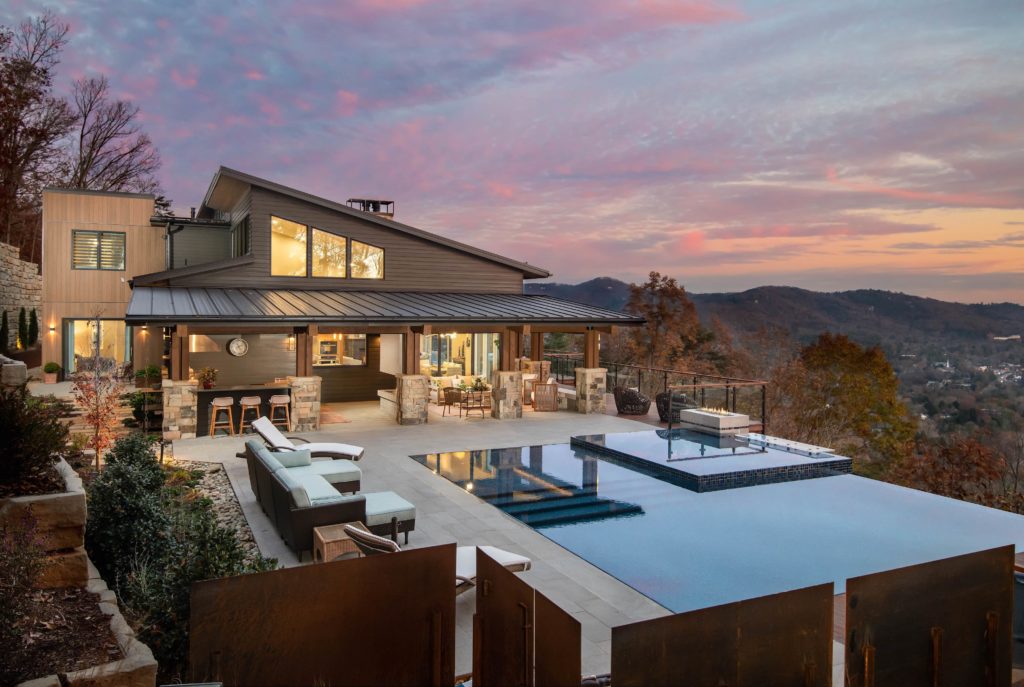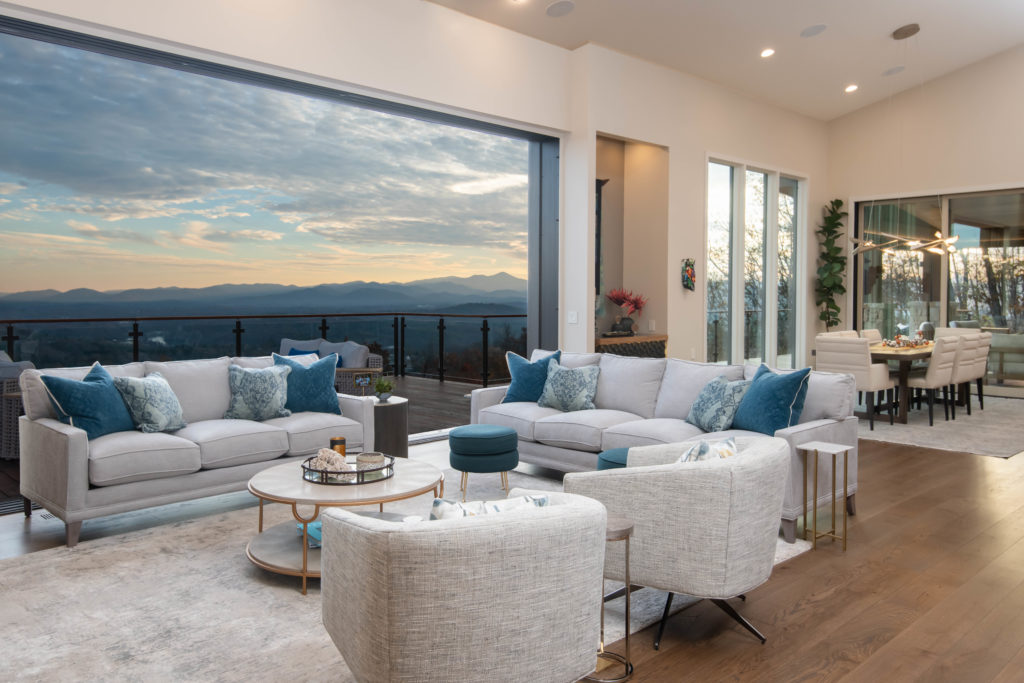Residential design evolves as millions of Americans hunker down at home.
By Susan Bady
Strong indoor/outdoor connections have always been critical to good home design, but as millions of Americans shelter in place, those connections are becoming even more important. Across the spectrum of single- and multifamily housing, this means using glazing in strategic ways; reconfiguring outdoor space to accommodate multiple uses; and providing a higher level of personal safety in common areas such as swimming pools and exercise rooms.
Regarding glazing, those massive sliding glass doors that fold back into the wall are a great asset, but they can be costly. Standard-size sliding doors combined with windows create the desired sense of connection without blowing the budget, says Don Ruthroff, AIA, principal of the Neighborhood Residential Studio at Dahlin Group Architecture | Planning, Pleasanton, Calif.
One trend that has re-emerged is the kitchen garden and creative ways of home farming, says Ruthroff (a quick google of guides to container gardening yield countless results). Outdoor offices are another way to maximize workspaces within the home.
“At Dahlin, we believe deeply in what are calling The New Front Porch, a space large enough to be the public living room of the home where guests are greeted and even entertained,” he says. The New Front Porch has a low wall or fence to contain children or pets while allowing interaction with neighbors and the enrichment of community ties.
Not Your Dad’s Garage
The garage, too, is being reimagined. Ruthroff says homeowners are turning it into covered outdoor living space, where they like to spend time because it encourages neighbors and friends to drop in without entering the home itself. Garages are also being used as gyms and offices.
Screened porches and outdoor living rooms (sometimes labeled California Rooms, Carolina Rooms, etc., depending on the state), are being used as secondary living spaces such as home offices and classrooms. Ruthroff thinks this trend is here to stay because people want the benefits of fresh air: “We see them doing yoga in the garden and on their back lawns.” As time goes on, there might even be a return of the sleeping porch, a popular feature of early 20th century homes.
Thanks to the strong economy over the past several years, consumers are adding back in all the “champagne” elements like home offices, home gyms, saunas, and outdoor kitchens, says Sean Sullivan, AMB, CGP, CAPS, BGRE, president of Living Stone Design+Build in Black Mountain, N.C. “This has simply made it easier for those homeowners during the shelter-in-place time,” Sullivan says.
One good example of a completely tricked-out backyard space is the Sennett Residence in Asheville, N.C., winner of a Gold Best in American Living Award in 2019 for Best One-of-a-Kind Custom Home, 4,001-5,000 square feet. Living Stone and Retro+Fit Design, Asheville, N.C., created a contemporary home that is integrated into a hillside and maximizes views out the back. An infinity-edge pool with a hot tub and fire feature occupy the far corner of the outdoor living area. The pool deck is essentially a porch with a fireplace, a large-screen TV, an outdoor kitchen, multiple seating arrangements, a Corten steel raised planter, a fountain outside the guest room, and glass railings for an unobstructed view.
Some homeowners take it even further, adding lazy rivers and grottoes to their pools and pizza ovens to their outdoor kitchens.
Living Stone’s clients are clamoring for properties and home designs that have a strong connection to the outdoors. “In many cases, this includes either building in a community with subsistence farming or having the ability to own acreage and be a ‘prepper,’” he says.
Sullivan says biophilic design is hugely popular right now. “In fact, it has been trending for the last five years and is still the strongest design preference for our clients,” he says. Biophilic design is a concept used within the building industry to increase homeowners’ connectivity to the natural environment through direct nature, indirect nature, and space and place conditions. It plays right into the idea of indoor/outdoor connections being essential for people who are confined at home.
Safer Ways to Swim and Work Out
Meanwhile, managers of multifamily buildings are implementing monitored usage to limit the number of people occupying a common area, such as the pool or gym, at any given time. They must enforce government protocols such as the wearing of masks and staying six feet apart, and residents may also have to sign a consent form.
With some tweaking, though, common spaces can be organized in a way that is both safe and comfortable for residents, says Ruthroff. There should be small groupings that enable social distancing as well as alcoves that provide more private space while still being part of the larger area, he says. Cabanas on pool decks and rooftops are effective in offering people safe separation while using a common amenity.
In addition, Ruthroff notes that nooks and crannies on individual floors can be refashioned as workspaces that allow residents to leave their homes and work in a semi-private environment. It’s not unlike college dormitories where study areas are provided on every floor.
The importance of connection extends beyond the home itself. As Sullivan notes, a sustainable neighborhood must be pedestrian- and bike-friendly and accessible to public transportation. A connected neighborhood is not only greener but ensures that neighbors avoid becoming too isolated.
Post by Susan Bady, self-proclaimed “armchair architect” and advocate of sustainability, new building technology and most of all, good design.






